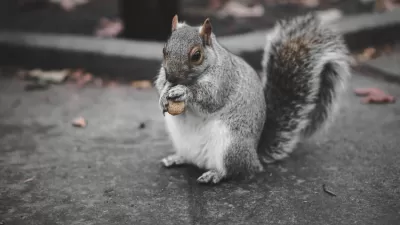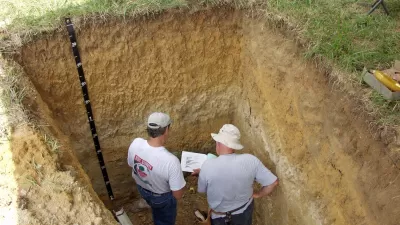A recent article reveals the inconspicuous nature of the city—an ecosystem, "pipes and all."
"Cities may strike us as the opposite of 'the environment': As we pave streets and erect buildings, nature comes to feel like the thing you find somewhere else. But scientists working in the growing field of urban ecology argue that we’re missing something," writes Courtney Humphries for The Boston Globe. In fact, according to the article, "the city is a distinct form of 'environment,' and an important one. Truly understanding how it works—and how it affects the millions of people who may live and work there—will mean studying the whole city as a living system, both its organisms and its pipes, roads, and landfills."
Humphries goes on to cite a number of research activities around Boston and other cities that research the implications our emerging understanding of urban ecology: "Living systems don’t just exist: They evolve, responding to changes in the rules that govern their existence. And as we try to design more sustainable cities for the future, understanding the full picture of urban ecosystems just might give us a smarter way to shape them."
FULL STORY: The city is an ecosystem, pipes and all

Study: Maui’s Plan to Convert Vacation Rentals to Long-Term Housing Could Cause Nearly $1 Billion Economic Loss
The plan would reduce visitor accommodation by 25,% resulting in 1,900 jobs lost.

North Texas Transit Leaders Tout Benefits of TOD for Growing Region
At a summit focused on transit-oriented development, policymakers discussed how North Texas’ expanded light rail system can serve as a tool for economic growth.

Why Should We Subsidize Public Transportation?
Many public transit agencies face financial stress due to rising costs, declining fare revenue, and declining subsidies. Transit advocates must provide a strong business case for increasing public transit funding.

How to Make US Trains Faster
Changes to boarding platforms and a switch to electric trains could improve U.S. passenger rail service without the added cost of high-speed rail.

Columbia’s Revitalized ‘Loop’ Is a Hub for Local Entrepreneurs
A focus on small businesses is helping a commercial corridor in Columbia, Missouri thrive.

Invasive Insect Threatens Minnesota’s Ash Forests
The Emerald Ash Borer is a rapidly spreading invasive pest threatening Minnesota’s ash trees, and homeowners are encouraged to plant diverse replacement species, avoid moving ash firewood, and monitor for signs of infestation.
Urban Design for Planners 1: Software Tools
This six-course series explores essential urban design concepts using open source software and equips planners with the tools they need to participate fully in the urban design process.
Planning for Universal Design
Learn the tools for implementing Universal Design in planning regulations.
Ascent Environmental
Borough of Carlisle
Institute for Housing and Urban Development Studies (IHS)
City of Grandview
Harvard GSD Executive Education
Toledo-Lucas County Plan Commissions
Salt Lake City
NYU Wagner Graduate School of Public Service





























